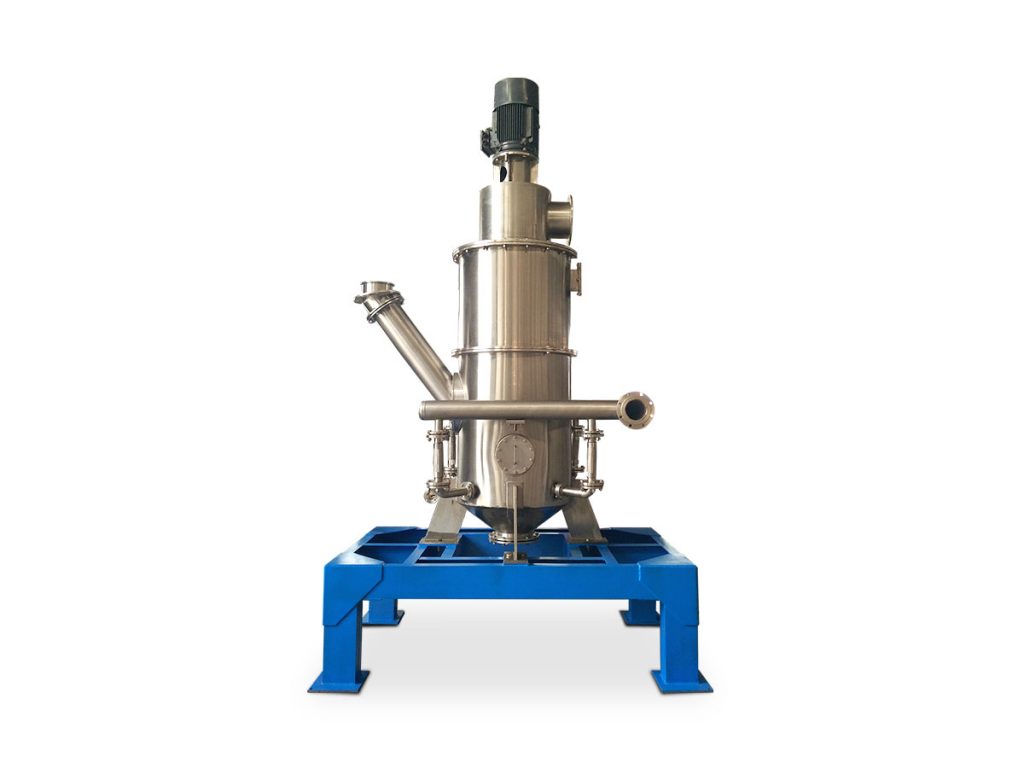Are the particle sizes of raw materials and auxiliary materials too large? Try jet mill

Compared with other types of pulverizers, the main advantage of a jet pulverizer is that it can pulverize crystallized materials to an average particle size of 1 to 10 microns and within a very narrow particle size range at the same time.
Typically, a jet mill will grind friable or crystalline materials down to an average particle size of 1 to 10 microns. Certain products, such as certain molybdenum compounds, paint pigments and similar products, can be reduced to 200 nanometer particles. Particles larger than 10 microns are typically hard-to-break polymers, such as toner compounds or hard waxes, and some organic materials, but if larger sizes are required, many can be reduced by reducing the power of the jet mill or increasing the feed rate.
The working principle of the airflow crusher is: compressed air is dried, and after drying, it enters the crushing chamber through the nozzle. In the crushing chamber, the materials can be crushed through high-pressure air flow. Afterwards, the coarse and fine materials can be separated under the centrifugal force generated by the classification turbine. Particles that meet the particle size requirements enter the cyclone separator and dust collector and are collected, while particles that do not meet the requirements continue to be crushed. The performance characteristics of the jet pulverizer mainly include the following points:
1. There is a vertical classification device inside, which can adjust the product particle size. The crushing particle size is good and the particle size distribution is relatively narrow. 2. It can be used in series with a multi-stage classifier to form multiple granularity segments at the same time. 3. The equipment is very convenient to disassemble and assemble, and easy to clean. There are no dead spots on the inner wall, so it can be cleaned thoroughly. 4. It is operated in an airtight manner, which makes the operation noise low, reduces the generation of dust, and is environmentally friendly. 5. The control system is simple to operate and the equipment operates safely and reliably.
What materials can be ground by jet milling?
Any crystalline or friable powder can be ground in a jet mill. Wet materials can also be quickly dried and ground simultaneously using heated air or superheated steam.
What are the characteristics of jet crushing products?
One of the most important characteristics of jet mill products is the substantial increase in surface area. When reduced to 5 microns, the number of particles in a 30-mesh product increases by 1,643,000 times, and the surface area increases by 118 times. This shortens the reaction time of chemicals. Increases drug potency by increasing surface area, so a lower dose of drug is required to do the same job.
How to adjust particle size in a jet mill?
Particle size is mainly adjusted by changes in feed rate. When the rate is reduced, finer particles are produced because more energy per particle is available to accelerate the particles. The collisions become more violent and the pressure gradient increases. Certain products require extremely high applied energy to grind. Likewise, for a given speed, the smaller the particle, the lower the energy of each collision. To achieve greater size reduction, the particle velocity must be increased.
Is compressed air the only gas that powers a jet pulverizer?
Commercially, compressed air is by far the most commonly used gas, but in large equipment primarily grinding titanium dioxide pigments superheated steam (no moisture is present in the superheated state) is used.
How much contamination does a jet mill cause to the product?
A properly specified jet mill will not cause any contamination of the product, or it will be so small that it is undetectable and of no significance. When grinding materials such as alumina, silica, iron oxide, etc., the jet mill is lined with tungsten carbide or silicon carbide ceramics with a hardness of 9.6 (diamond is 10). These liners have been developed over 35 years and are one of the earliest uses of this type of ceramic lining.
Can a jet mill be used only to reduce particle size?
Jet mills have many applications besides size reduction. One of the important secondary uses of a jet mill is to mix powders. Two or more material streams can be fed into the jet mill at the same time, thereby achieving perfect uniform mixing at the output end. One product can also be coated and mixed with another product. In some cases, liquid additives are injected under pressure directly into the grinding chamber through one or more atomizing nozzles. Another use for air milling is to polish the sharp edges on the particles so that they flow or compress better.
